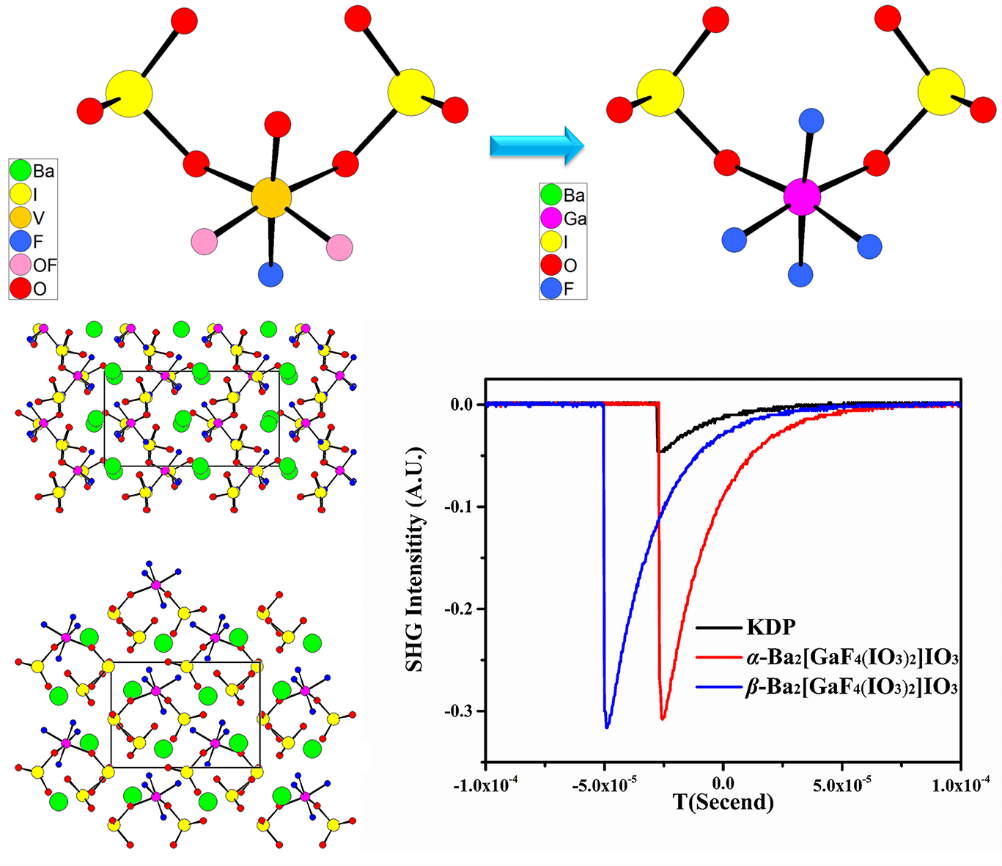Metal iodates attract much research attention due to their applications as promising second-order nonlinear optical (NLO) materials.It has been reported that two-site alivolent substitution is an effective route for exploring novel NLO materials.
In a recent study published in Angew. Chem. Int. Ed. , the research group led by Prof. MAO Jianggao at Fujian Institute of Research on the Structure of Matter, Chinese Academy of Sciences proposed that three-site alivolent substitution is a facile route for new NLO materials.
Researchers obtained two new metal iodates, i.e. α- and β-Ba2[GaF4(IO3)2](IO3), via replacing V5+ cation with Ga3+ cation, and in the meantime two O2- anions being substituted by two F- anions from the parent compounds α- and β-Ba2[VO2F2(IO3)2](IO3).
They found that α- and β-Ba2[GaF4(IO3)2](IO3) maintain the overall topology with large polarizability, and the favorable alignment of [Ga(IO3)2F4]3- and IO3- anions results in a large SHG response (~ 6 × KDP).
Meanwhile, the introduction of post main group element Ga and strong electronegativity anion F- generates the wide bandgap and high relevant LDTs (4.61 eV, 29.7 × AGS and 4.35 eV, 28.3 × AGS).
These results manifested that the obtained two new metal iodates could be the valuable-prospective NLO materials application in the region from ultraviolet to mid-infrared.
Different from the two-site alivolent substitution, three-site alivolent substitution features a displacement of d0-TM octahedron with non-d0-TM octahedron because of the charge difference of two for the cation. By this substitution, researchers can greatly expand the family of NLO materials.
Three-site alivolent substitution could be a facile and effective route for exploring new NLO materials.

Substitution VO2F2(IO3)2 by GaF4(IO3)2, the structure of α- and β-Ba2[GaF4(IO3)2](IO3) and large SHG effect. (Image by Prof. MAO’s group)
Contact:
Prof. MAO Jianggao
Fujian Institute of Research on the Structure of Matter
Chinese Academy of Sciences
Email: mjg@fjirsm.ac.cn